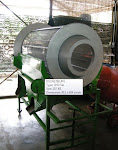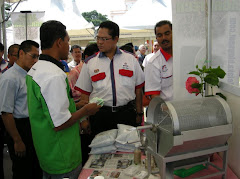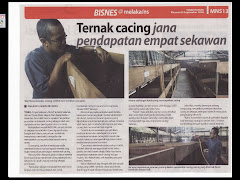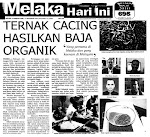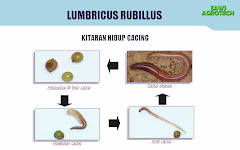BY: Pablo Hidalgo, Frank B. Matta and Richard Harkess; Mississippi State University
Earthworm (Eisenia fetida andrei) castings were tested at Mississippi State University in 1997 as a growth media for marigolds (Tagetes erecta).
Results showed that earthworm castings increased the growth index, increased stem diameter, enhanced root growth, increased dry weight, increased flower initiation, and increased flower numbers when compared to peat moss (perlite 7:3, Sunshine®, an d pine bark: sand 4:1).
Mixture of castings with peat moss (perlite 7:3, pine bark: sand 4:1) at the ratios of 1:1, 2:1 and 3:1 (media: castings) showed better performance for all growth parameters previously mentioned when greater amounts of castings were used.
Hildago is a doctoral student in plant and soil sciences at Mississippi State University. Matta and Harkess are MAFES horticulturists at MSU.
http://msucares.com/pubs/highlights/spring99.htm
____________________________________________________________
A worm casting (also known as worm cast or vermicast) is a biologically active mound containing thousands of bacteria, enzymes, and remnants of plant materials and animal manures that were not digested by the earthworm. The composting process continues after a worm casting has been deposited. In fact, the bacterial population of a cast is much greater than the bacterial population of either ingested soil, or the earthworm's gut. An important component of this dark mass if humus. Humus is a complicated material formed during the breakdown of organic matter. One of its components, humic acid, provides many binding sites for plant nutrients, such as calcium, iron, potassium, sulfur and phosphorus. These nutrients are stored in the humic acid molecule in a form readily available to plants, and are released when the plants require them. Mary Appelhof, Worms Eat My Garbage, 1982, p.68.
____________________________________________________________
Castings contain slow release nutrients that are readily available to plants. Castings contain the plant nutrients that are encased in mucus membranes that are secreted by the earthworms. They dissolve slowly rather than allowing immediate nutrient leaching. The product has excellent soil structure, porosity, aeration and water retention capabilities. The product can insulate plant roots from extreme temperatures, reduce erosion and control weeds. It is odorless and consists of 100% recycled materials. "Vermigro" Premium Earthworm Soil Product, sold by Canyon Recycling, San Diego.
____________________________________________________________
The activity of the earthworm gut is like a miniature composting tube that mixes, conditions, and inoculates the residues. Moisture, pH, and microbial populations in the gut are favorably maintained for a synergistic relationship, and then a terrific By-product. Dr. Bill Becker, "The Benefits of Earthworms," Natural Food and Farming, July/August, 1991, p. 12.
___________________________________________________________
Earthworm castings are the best imaginable potting soil for greenhouses or houseplants, as well as gardening and farming. It will not burn even the most delicate plants and all nutrients are water-soluble, making it an immediate plant food. Earthworm castings, in addition to their use as a potting soil, can be used as a planting soil for trees, vegetables, shrubs, and flowers. They may be used as a mulch so that the minerals leach directly into the ground when watered. The effects of earthworm castings used in any of these ways are immediately visible. They make plants grow fast and strong. Nematodes and diseases will not ruin gardens or plants if the soil is rich enough for them to grow fast. It is the weak plant in poor soil that is destroyed by nematodes and diseases. R.E. Gaddie and D.E. Douglas, Earthworms For Ecology and Profit, Vol. I "Scientific Earthworm Farming," 1975, p. 175.
____________________________________________________________
Castings contain: 5 times the available nitrogen, 7 times the available potash and 1 1/2 times more calcium than that found in 15 cm of good top soil. Therefore, castings are supplied with available nutrients. The nutrients are also water soluble and immediately available to plant life. You will find that most potting soils have nutrient life of 2-5 days, where worm castings will last up to 6 times as long as other types of potting soils. You will need 5 times as much potting soil to do the same job as the worm castings. So, in the long run, worm castings are much cheaper and do a much better job. Also, castings hold 2-3 times their weight in water. That means you water less and the pot will stay damper for a longer period. Worm castings will not burn your plants; unlike using any fresh raw manures (cow, horse, etc.) which can burn root systems if it is not applied properly. The advantage of using castings is the manure passes through the worms' digestive system producing rich organic plant food and a slow releasing fertilizer that allows for better growth. Kids for Landcare: Wormwatch, Education Department of South Australia, 1992, p. 35.
____________________________________________________________
"VermigroTM Compost is produced using two composting processes. The first, thermophylic composting, has been in use over 60 years in the U.S. The process raises the temperature to over 131° F. to help ensure a product free of weed seeds and harmful organisms. The second, vermicomposting, adds valuable attributes such as water retention, texture, nutrient availability, a rich earthy fragrance and an ability to fight soil-borne plant diseases such as root rot." Resource Conversion Corporation, San Diego, CA.
Hubungi Kami
Followers

Lokasi C
Parkman Agro
|
Try My Fast URL: http://clix.to/ternak_cacing 
|
Article CACING
- Alternatif dari Bahan Cacing Tanah (Lubricus Rubellus)
- Baja Kompos Secara Ringkasnya
- Baja organik berasaskan najis babi pula didedahkan
- Basic Earthworm Biology
- Cacing jana pendapatan lumayan
- Cacing pun Bisa Menguntungkan
- CACING SEBAGAI UBAT
- Cacing Tanah - Lumbricus Rubellus
- CacingTanah
- Dulu makan gaji, kini pengusaha cacing berjaya
- Fatwa ternak cacing
- Harga baja kimia naik lebih 20%
- Harga mampu cecah RM600 sekilogram
- Hidup mewah - menternak cacing
- How to make good compost
- Kitaran Hidup Cacing
- Kompos: Cara-cara Penyediaan Secara Sendiri
- Lawatan Penulis Blog LigaKampung
- Lawatan YB ke reban cacing di Kg Tehel
- Lintah Dan Cacing Harus Untuk Perubatan Dan Kosmetik
- Pasaran Cacing- Mana Arahnya
- Permintaan cacing di pasaran semakin tinggi
- Potensi Ternakan Cacing Kompos
- Ternakan cacing kompos.
- TONG SAMPAH MESRA ALAM - BioCom
- Usahawan cacing Kemaman
- Vermicompos
- Vermikompos (Kompos Cacing Tanah)
- Worm your way into money
EM - Effective Microorganisms
Cara Penternakan Cacing
Kewangan ANDA
BULETIN
Blog Archive
-
▼
2008
(75)
-
▼
May
(25)
- APLIKASI DAN PENYIMPANAN EM
- Effective Microorganisms
- Harga baja kimia naik lebih 20%
- Baja organik berasaskan najis babi pula didedahkan
- Kitaran Hidup Cacing
- Harga mampu cecah RM600 sekilogram
- Permintaan cacing di pasaran semakin tinggi
- Cacing jana pendapatan lumayan
- Ternak Cacing - Hidup mewah ternak cacing
- VERMIKOMPOS(Kompos Cacing Tanah)PUPUK ORGANIK BERK...
- Pakan Ikan Alternatif dari Bahan Cacing Tanah (Lub...
- Cacing pun Bisa Menguntungkan
- Vermikompos (Kompos Cacing Tanah)
- Earthworm Castings Increase Germination Rate and S...
- Media Containing Earthworm Castings as Related to ...
- ASB & Unit Trust : Mana Satu Lebih Untung?
- Adakah Untung Dalam Unit Trust?
- Pelaburan Unit Trust
- Kompos-baja organik
- TONG SAMPAH MESRA ALAM - BioCom
- Baja Kompos Secara Ringkasnya
- Usahawan cacing Kemaman
- Basic Earthworm Biology
- Worm your way into money
- Cacing Like & Unlike
-
▼
May
(25)

